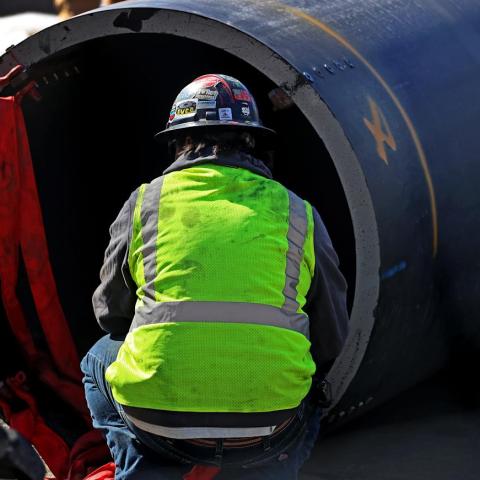A state of emergency has been declared in New York City, Long Island, and Westchester County as a powerful nor’easter approaches. The storm is expected to bring heavy rain and strong winds, raising concerns about damage and flooding.
The National Weather Service has issued Coastal Flood Warnings until Monday evening. Suffolk County faces a High Wind Warning, while a Wind Advisory is active for the rest of Long Island, New York City, and southern Westchester County. Governor Kathy Hochul emphasized safety, stating, “Extreme caution is urged until the storm has passed.” The state is coordinating closely with local officials to prepare for the storm’s impact.
Mayor Eric Adams acknowledged the collaboration with state officials and assured residents that teams are working hard to keep them informed. He stressed the importance of safety during these conditions.
New Jersey has also declared a state of emergency, bracing for similar impacts.
As the storm progresses, over 7,000 utility workers in New York are on standby for potential power outages. Local reports of outages began coming in early Sunday evening.
For those experiencing outages, here are the contact numbers:
- Central Hudson: 800-527-2714
- Con Edison: 800-752-6633
- National Grid: 800-867-5222
- NYSEG: 800-572-1131
- O&R: 877-434-4100
- PSEG-LI: 800-490-0075
- RG&E: 800-743-1701
Travel is also affected, with delays reported at all three major airports in the Tri-State Area. The MTA announced that empty tractor-trailers and tandem trucks will be banned from city bridges and tunnels until Monday evening. Flooding is a concern for the subway system as well, with specific measures in place to manage water intrusion in 20 stations.
Suffolk County Executive Ed Romaine has advised drivers to avoid travel if possible. NJ Transit has adjusted services, suspending certain bus routes and may announce more changes as the storm unfolds.
In a broader context, this storm follows a trend of severe weather events impacting the region. According to the National Oceanic and Atmospheric Administration (NOAA), the northeast has seen an increase in intense storms in recent years, with data showing a 25% rise in extreme precipitation events since 1970. As climate change progresses, experts warn that such storms could become more frequent and intense.
This storm reminds us to stay vigilant and prepared. If you haven’t already, now is the time to gather emergency supplies and stay updated on weather alerts.





















